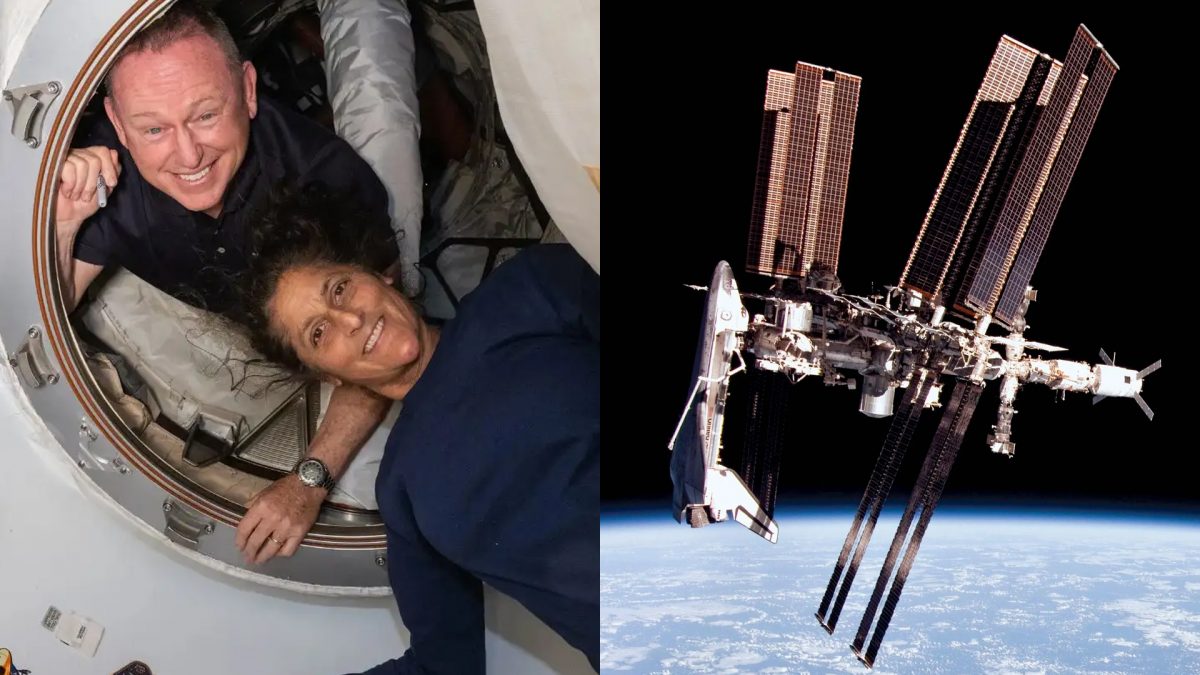NASA’s OIG, in collaboration with the Pentagon’s Defense Contract Management Agency (DCMA), launched an investigation into Boeing’s operations, uncovering numerous administrative errors and ineffective responses to major quality control problems read more
)
Boeing, for its part, has defended the Starliner's capabilities, stating that the spacecraft could still safely return the astronauts to Earth if needed. Image Credit: NASA, NASA
A new report from NASA’s Office of the Inspector General (OIG) has sharply criticized Boeing for significant quality control issues, highlighting how these shortcomings have stranded two astronauts on the International Space Station (ISS).
The report, released on Wednesday, has even called for financial penalties against the aerospace giant for its failure to comply with quality control standards.
Boeing’s quality management failures
The report paints a bleak picture of Boeing’s handling of its spacecraft production, particularly its Starliner spacecraft, which was supposed to transport two astronauts on a nine-day mission this past June. However, due to ongoing technical issues and delays, the mission has stretched into August, with the astronauts likely remaining in space until well into 2025.
NASA’s OIG, in collaboration with the Pentagon’s Defense Contract Management Agency (DCMA), launched an investigation into Boeing’s operations, uncovering numerous administrative errors and ineffective responses to quality control problems.
The report states that Boeing’s processes to address quality and product issues has been “ineffective” to say the least, and that the company has been largely nonresponsive in taking corrective actions when the same issues reoccur.
One of the most alarming findings was related to a liquid oxygen fuel tank dome, a critical component for housing rocket propellant. This hardware was found to be poorly assembled due to unsatisfactory welding operations, raising concerns about the overall quality of Boeing’s work on the Starliner spacecraft.
Pentagon’s involvement
To thoroughly investigate these issues, NASA OIG sought the assistance of the Pentagon’s DCMA. The DCMA team was tasked with monitoring Boeing’s core and upper-stage manufacturing efforts at NASA’s Michoud Assembly Facility in New Orleans.
Between 2021 and 2023, the team issued 71 Corrective Action Requests (CARs) at Levels I and II, signalling serious deficiencies in Boeing’s quality control processes.
A draft for a more severe Level III CAR, which could have led to withheld contract payments and alerted Boeing’s top executives, was prepared but ultimately not sent. According to the report, this high number of CARs for a spaceflight system at this stage of development reflects a recurring and degraded state of product quality control at Boeing.
The welding issues, in particular, were attributed to Boeing’s inexperienced technicians and inadequate work order planning and supervision. The report warned that the lack of a trained and qualified workforce increases the risk that Boeing will continue to produce parts and components that do not meet NASA’s requirements and industry standards.
NASA’s response and the astronauts’ situation
While the OIG report has raised alarms about Boeing’s quality control, NASA officials have downplayed the severity of the situation concerning the astronauts on the ISS. NASA has emphasized that the astronauts are not stranded and that the Starliner spacecraft could still serve as an emergency lifeboat if necessary.
However, the report’s findings have sparked concern within the space agency. Former NASA executive Scott Hubbard, who served on the Columbia Accident Investigation Board in 2003, acknowledged that while the astronauts are “kind of stuck,” they are not in immediate danger. They are safe aboard the ISS, with sufficient supplies and work to keep them occupied.
Boeing, for its part, has defended the Starliner’s capabilities, stating that the spacecraft could still safely return the astronauts to Earth if needed. The company also indicated that it would comply with NASA’s decision if the agency chooses to bring the capsule back empty.
In a statement, Boeing outlined the extensive tests conducted on the Starliner’s thrusters since liftoff and reiterated its confidence in the spacecraft’s capability and flight rationale. However, the company’s repeated quality control failures and the damning findings of the NASA OIG report have raised serious questions about its ability to meet the stringent demands of spaceflight.
The report’s call for financial penalties and the ongoing scrutiny from both NASA and the Pentagon suggest that Boeing will face significant challenges in regaining trust and ensuring the safety and reliability of its future space missions.

 1 month ago
11
1 month ago
11
)
)
)
)
)
)
)
)
)
)
)
)
)
)
)
)
)
)
)
)
)
)
)
)
 English (US) ·
English (US) ·